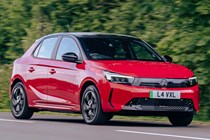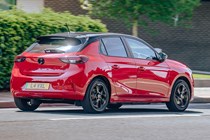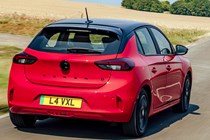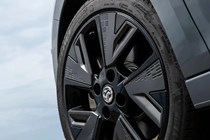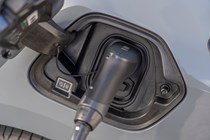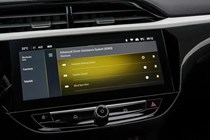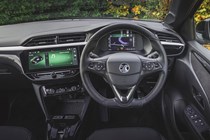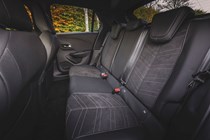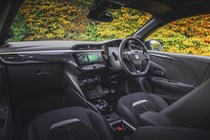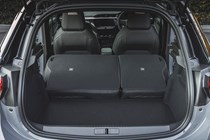
Vauxhall Corsa Electric engines, drive and performance
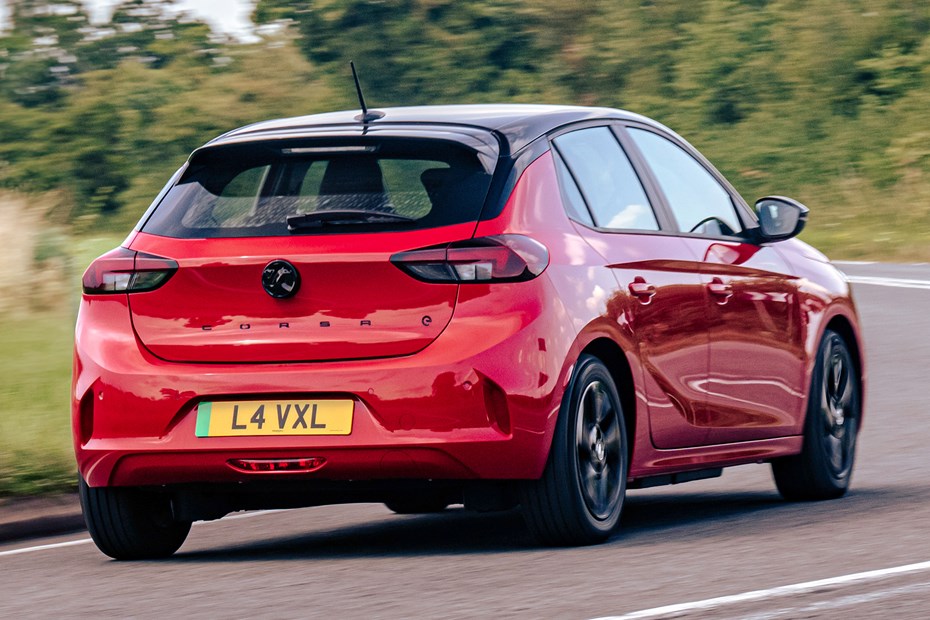
- Two electric motors
- Two battery packs
- 246-mile maximum range
Electric motors
Vauxhall added another powertrain to the Corsa Electric’s line-up for its facelift. Now, you have two choices. The most basic model features the same 136hp motor and 50kWh battery that was fitted to the previous version of the car. It can shove the hatchback from 0–62mph in 8.9 seconds and offers a maximum WLTP range of 222 miles.
Above that there’s a new ‘Long Range’ Corsa Electric. It features a larger 51kWh battery pack and a more powerful electric motor with 156hp. The extra grunt cuts the EV’s 0–62mph time down to 8.2 seconds, while the additional battery capacity and slightly more efficient motor pushes the car’s maximum official range up to 246 miles.
Both versions of the Corsa Electric feel nippy but, because they both produce 260Nm of torque, we don’t think it’s worth trading up to the Long Range model for the extra performance alone. The biggest reason to spec the pricier powertrain is for the additional range.
Like the pre-facelift car, this revised model features a trio of drive modes, two of which restrict the motor’s maximum performance to conserve battery power. Eco mode slashes both cars’ outputs down to 82hp, while Normal mode restricts the motors to 109hp. Sport mode unleashes the maximum amount of power each motor can supply, while also sharpening up accelerator response and increasing steering weight.
Both powertrains have two levels of regenerative braking. The recuperation is quite mild in its default setting, but you can double the effect by prodding the B button on the gear selector. This mode is strong enough to slow the car down to a 5mph crawl – and all you need to do is lift off the accelerator.
What’s it like to drive?
- Fun and nippy handling
- Low centre of gravity thanks to battery
- Motor runs out of puff at high speeds
The Corsa Electric is comfortably the fastest model in the Corsa range. Like most single-speed electric cars, it punches hard from a standstill, which makes it great at darting ahead of traffic on busy city streets. However, it runs out of steam as you approach 50mph. For that reason, you need to plan your motorway overtakes more carefully than you’d think.
The new 156hp motor and 51kWh battery pack haven’t dramatically changed the way the Corsa drives. The motor is only fractionally quicker against the stopwatch and the battery weighs about the same as the old 50kWh pack as Vauxhall built it using fewer, larger cells. That means the difference between the two cars are very slim in the real world.
Still, 260Nm is an awful lot of torque to have at your disposal from a standing start. Remember, every Nm is available from just 1rpm so, if you floor the accelerator with loads of lock on, the front wheels will break loose – and the traction control will take a little while to calm the mayhem.
In the corners, the Corsa is very predictable. Because the battery is mounted underneath the car, it has a very low centre of gravity – 10% lower than the standard car’s, in fact – and a near perfect 50/50 weight distribution. Team these benefits with the car’s firm suspension, and you’ll find you can take corners with more verve than you would in the petrol-powered model.
The Corsa Electric’s ride isn’t bad, despite the added weight of its battery pack and the stiffer suspension required to control it. On Germany’s fastidiously maintained roads, we couldn’t really find fault with it – but we expect that to change once we get the car on British soil.
Vauxhall didn’t make any changes to the Corsa’s chassis for its facelift – and our experience of the pre-facelift car tells us it’s a little too firm for broken UK roads. It’s never painfully uncomfortable, but certain road conditions can unstick it. For example, a series of small bumps can create a corresponding rhythmic clatter at the rear end. That’s the worst of it, though. For the most part, it’s a refined and composed companion.
The Corsa’s steering weight is well-judged. In normal mode, there’s just enough heft to make it not feel like you’re playing an arcade game, but it isn’t stodgy enough to tire you out when manoeuvring around town. It lacks a lot of feedback, but this is a complaint shared with every car based on Stellantis’s e-CMP2 platform, including the Peugeot e-208 and Jeep Avenger.




